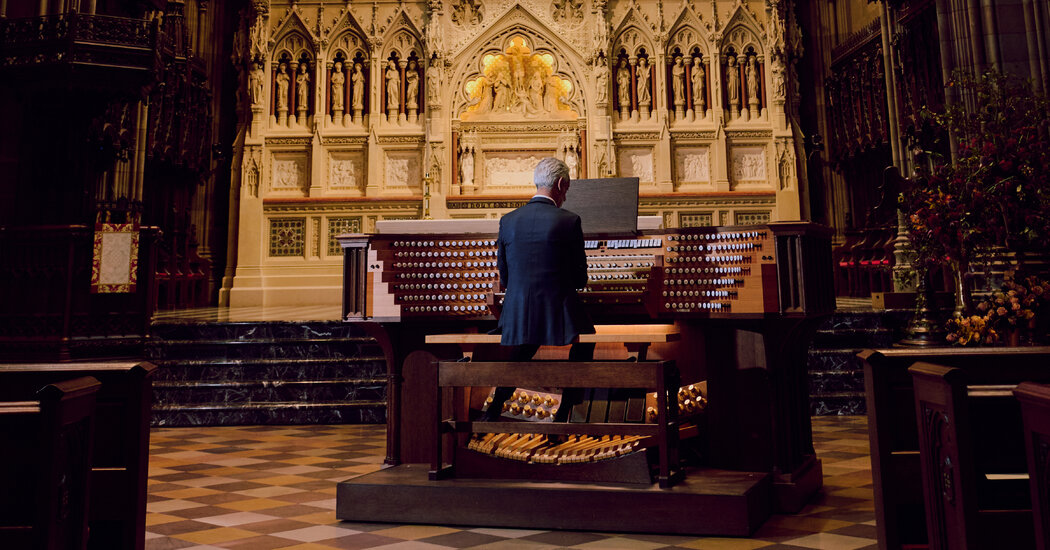In the heart of Lower Manhattan, where the echoes of tragedy once reverberated through dust-covered streets, a new sound now fills the air—the triumphant voice of Trinity Church’s newly unveiled pipe organ. After more than two decades of silence, the historic church has finally replaced the instrument destroyed in the September 11 attacks, marking not just a musical milestone but a profound symbol of renewal and resilience.
The Devastation and Long Road to Recovery
Trinity Church Wall Street, a towering Gothic Revival masterpiece that has stood sentinel over Lower Manhattan since 1846, survived the catastrophic collapse of the World Trade Center towers on September 11, 2001. However, while the stone walls weathered the unthinkable, the church’s interior bore the invisible scars of that tragic day. The massive pipe organ, once the musical heartbeat of this historic congregation, was among the casualties—not destroyed by falling debris, but rendered unplayable by the toxic dust and debris that infiltrated every corner of the sacred space.
The process of recovery proved far more complex than anyone initially anticipated. Unlike replacing broken windows or cleaning damaged stonework, restoring a pipe organ requires meticulous attention to thousands of intricate components. Each of the organ’s pipes, some as small as pencils and others towering over human height, had been contaminated by the toxic cloud that engulfed Lower Manhattan. The delicate mechanical systems, wind chests, and console were all compromised beyond repair.
Understanding the Magnitude of Loss
For those unfamiliar with pipe organs, the destruction represented more than just the loss of a musical instrument. Trinity Church’s organ served as the cornerstone of worship services, memorial ceremonies, concerts, and community gatherings. These magnificent instruments are often considered the “King of Instruments” due to their complexity and range, capable of producing sounds from the softest whisper to the most thunderous fortissimo. The silence left by its absence was both literal and metaphorical, representing the broader trauma experienced by the Lower Manhattan community.
The Resurrection: A New Organ Rises
The newly unveiled replacement organ represents a triumph of both craftsmanship and community determination. Featuring 8,041 individual pipes, this magnificent instrument surpasses its predecessor in both scope and sonic capability. The number itself tells a story—each pipe represents hours of careful craftsmanship, precise tuning, and artistic vision.
The project required collaboration between renowned organ builders, acoustics experts, and Trinity Church’s leadership to create an instrument worthy of both the space and the significance of its installation. Unlike mass-produced instruments, each pipe organ is a bespoke creation, designed specifically for its acoustic environment. The builders had to consider Trinity Church’s unique Gothic architecture, with its soaring ceilings and stone walls that create a distinctive reverberant environment.
Technical Marvel and Artistic Achievement
Modern pipe organs like Trinity’s new installation represent centuries of accumulated knowledge in acoustics, engineering, and musical artistry. The 8,041 pipes are arranged in multiple divisions, each serving specific musical functions. Some pipes produce the fundamental tones that anchor hymns and liturgical music, while others provide the colorful stops that allow organists to paint with sound—imitating everything from gentle flutes to brilliant trumpets.
The console, where the organist sits to play, connects to this vast array of pipes through an intricate system that has evolved from purely mechanical linkages to sophisticated computer-controlled systems. This allows for unprecedented precision and reliability while maintaining the organic, breathing quality that distinguishes pipe organs from electronic alternatives.
More Than Music: Symbols of Renewal
The completion of Trinity Church’s new organ carries significance that extends far beyond its musical capabilities. In a neighborhood still processing the long-term impacts of 9/11, the installation represents a commitment to cultural continuity and community healing. The project signals that Trinity Church, like Lower Manhattan itself, refuses to be defined by tragedy.
Religious communities often find particular meaning in the resurrection metaphor, and Trinity’s new organ embodies this concept literally. From the destruction of the old instrument has risen something more magnificent and powerful than what was lost. This narrative resonates throughout Lower Manhattan, where new construction and renewed vitality have emerged from the site of unimaginable loss.
Community Impact and Cultural Significance
Trinity Church has long served as more than just a place of worship. Its location in the Financial District makes it a refuge for workers, tourists, and residents seeking a moment of peace in the bustling city. The church’s concert series, memorial services, and community events rely heavily on musical accompaniment, making the organ’s restoration crucial for Trinity’s continued role as a cultural anchor.
The new organ also represents a significant investment in the arts during a time when many cultural institutions face financial challenges. By prioritizing this major installation, Trinity Church demonstrates the enduring value of live, acoustic music in an increasingly digital world.
The Sound of Resilience
When visitors now enter Trinity Church, they experience more than just the visual grandeur of Gothic architecture. The sound of 8,041 pipes fills the space with frequencies that range from deep, felt vibrations to crystalline high notes that seem to touch the vaulted ceiling. This sonic landscape creates an immersive environment that electronic instruments simply cannot replicate.
Each pipe contributes to a collective voice that speaks to themes of persistence, beauty, and hope. The organ’s first notes after more than two decades of silence marked not just a musical moment but a milestone in Lower Manhattan’s ongoing recovery and renewal.
Looking Forward: A Living Memorial
Trinity Church’s new organ serves as a living memorial—not dwelling in the past but creating new experiences and memories for future generations. Unlike static monuments, this instrument will evolve with each performance, each service, and each moment when its voice fills the sacred space.
The completion of this project after more than twenty years demonstrates that some wounds require patience to heal properly. The result is not just a replacement for what was lost, but an enhancement that honors the past while embracing the future.
Key Takeaways
- Trinity Church’s original organ was destroyed by toxic dust and debris from the 9/11 attacks, requiring complete replacement rather than repair
- The new instrument features 8,041 individual pipes, representing a significant upgrade in both size and capability
- The project took over 20 years to complete, demonstrating the complex nature of pipe organ construction and installation
- The organ serves as both a functional musical instrument and a symbol of Lower Manhattan’s resilience and renewal
- Trinity Church’s investment in this major installation reinforces its role as a cultural anchor in the Financial District
- The completion represents more than musical restoration—it symbolizes community healing and commitment to cultural continuity
This article is based on reporting from the original source

Born and raised amidst the hustle and bustle of the Big Apple, I’ve witnessed the city’s many exciting phases. When I’m not exploring the city or penning down my thoughts, you can find me sipping on a cup of coffee at my favorite local café, playing chess or planning my next trip. For the last twelve years, I’ve been living in South Williamsburg with my partner Berenike.

